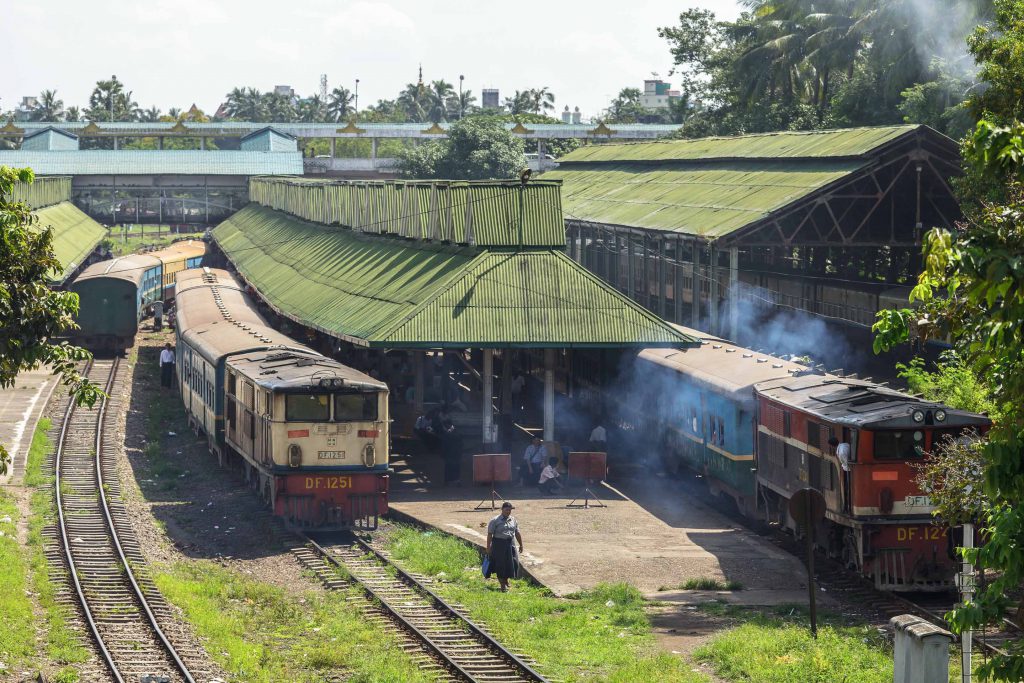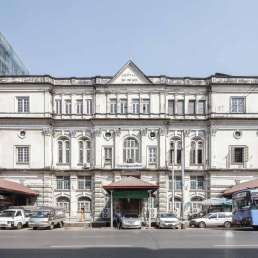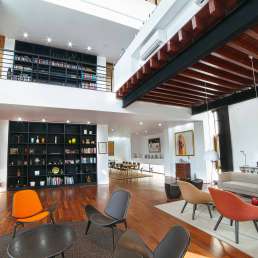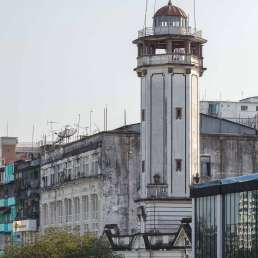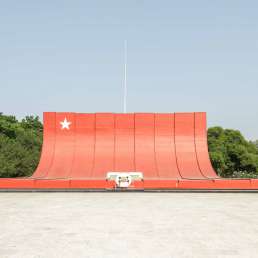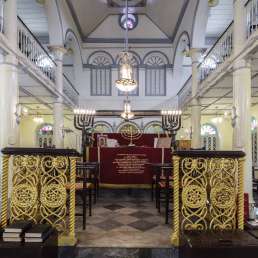Address: Kun Chan Road
Year built: 1947-1954
Architect: U Hla Gyaw
The Central Railway Station’s latest incarnation dates from the years 1947–1954. Another grandiose station had stood here before the Second World War. Built by the British in 1877, it was destroyed by the British themselves in 1942 as they retreated from the city, to prevent Japanese forces from using the rail infrastructure.
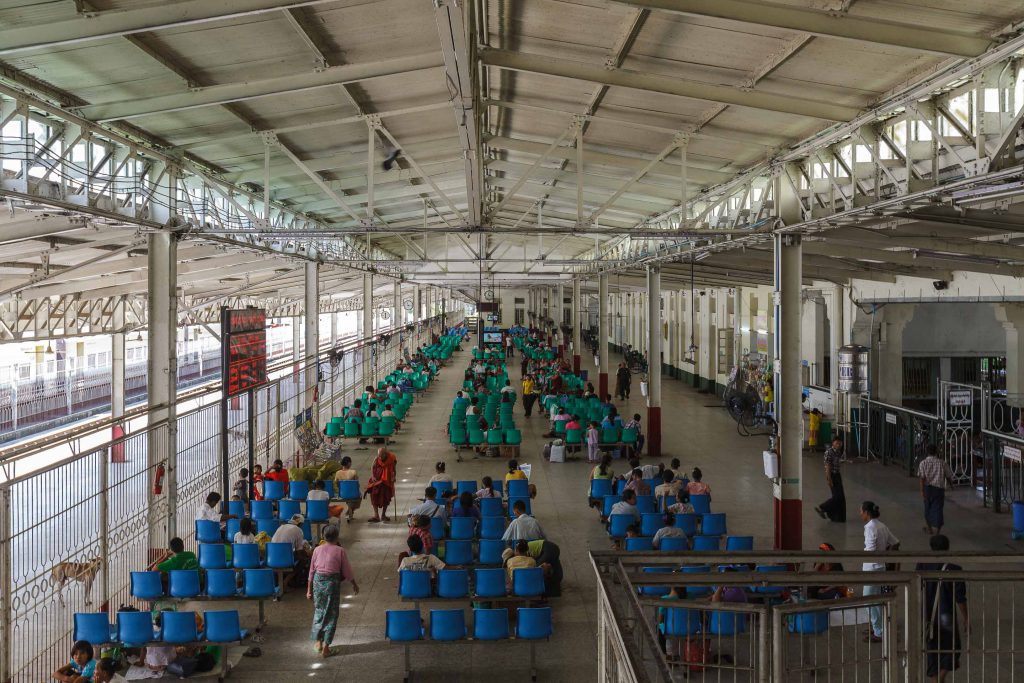
The station’s construction in 1877 marked the beginning of the railway system in Burma. Like in England, the expansion of rail travel was spurred by the financial muscle and commercial motives of private companies. In this case the Irrawaddy Valley State Railway—and their Indian labourers from Bihar—laid the first pieces of track between Rangoon and Prome (now Pyay), and helped the freighting of rice from the valley to Rangoon for export.
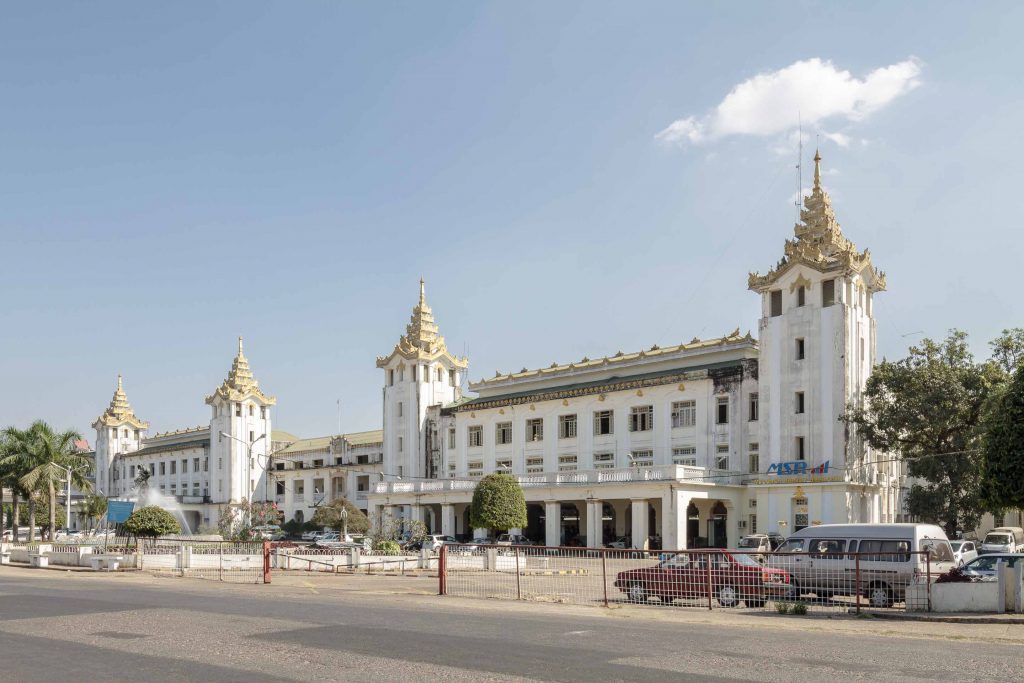
As you venture into the station, a number of destinations flash up on modern LED screens. Bagan and Mandalay are the likeliest tourist destinations, but the rail lines even stretch up to Myitkyina, the capital of Kachin State, which borders China. The modern screen displays contrast with some of the station’s more ancient features and its tired, post-war feel. (It’s worth seeking out the old machine by the ticket office, which both measures your weight and gives your horoscope.) That feel may not last forever: several developers are competing for the contract to redevelop the station, though discussions remain in the early stages.
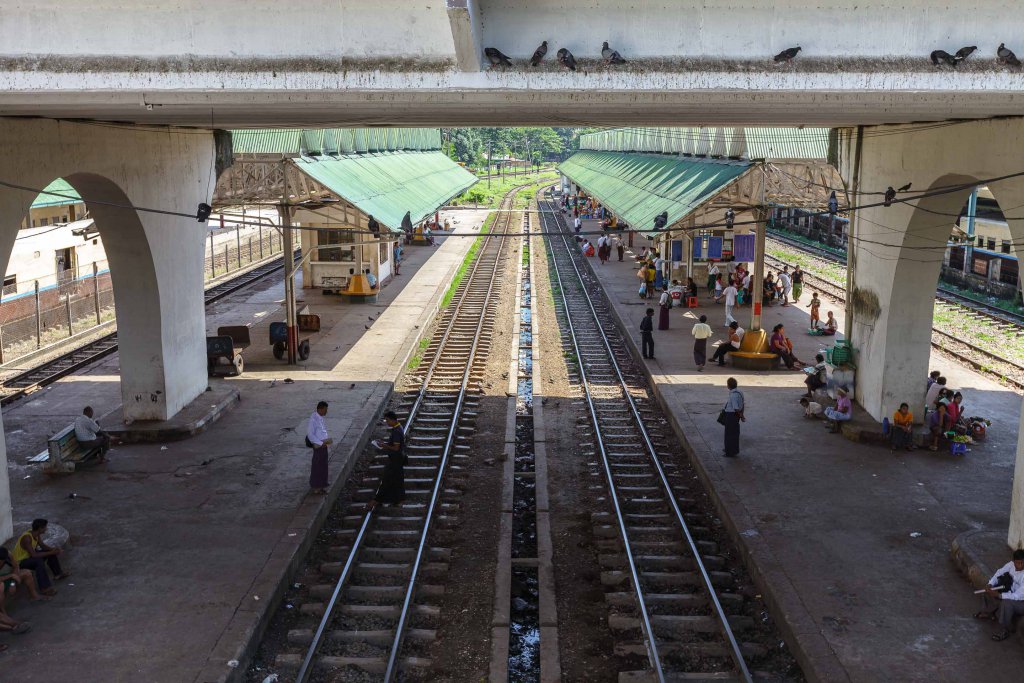
The footbridge at the eastern end of the main building affords clear views of the platforms, including their green corrugated roofing, which has echoes of pagoda design, and the concrete heptagonal seats that encase some pillars. Traditional pyatthat roofing covers the four towers that punctuate the main building. Two wide porticos double up as generous balconies on the western and eastern wings, facing a wide expanse of tarmac between the station and Bogyoke Aung San Stadium, often the scene of wildly creative car manoeuvres.
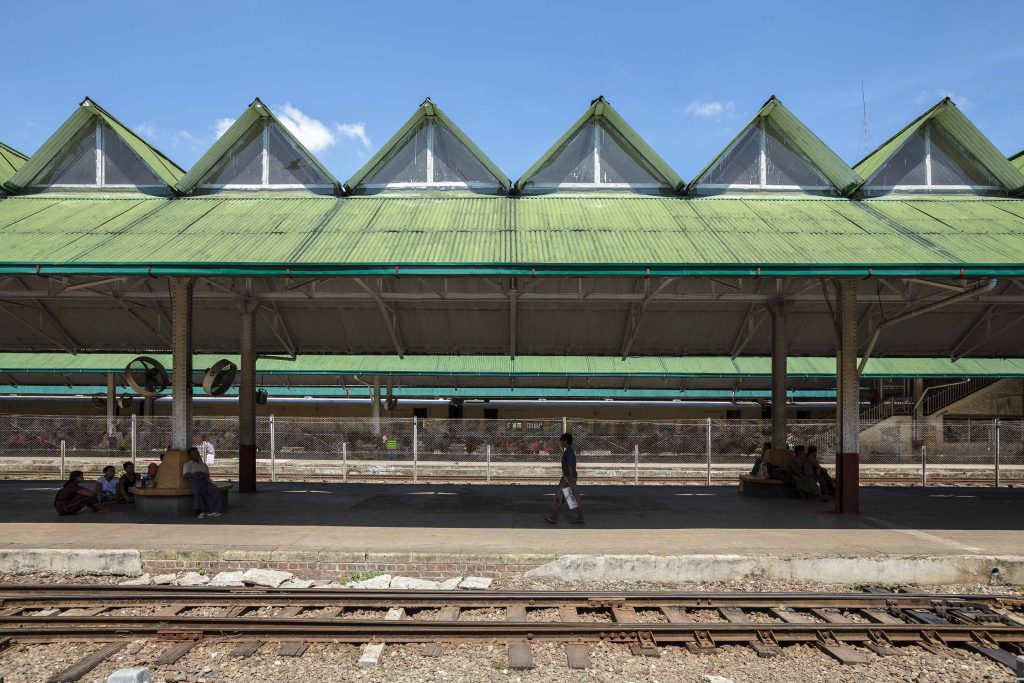
From platform 6 and 7 runs Yangon’s circular railway, used by the city’s rail commuters and a steady stream of tourists. The railway winds up the northwest of the city, past Insein, before looping eastwards and south back towards the railway station. Sit by the large windows and watch Yangon life, the commuters and betel nut vendors, weave in and out of the train cars and flow with the city. (For more about the circular railway, read its dedicated chapter.)
